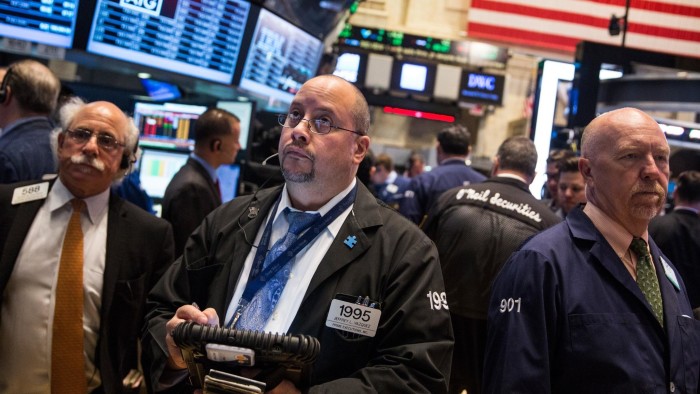Comment: Time for trading technology to grow up

Roula Khalaf, Editor of the FT, selects her favourite stories in this weekly newsletter.
About 18 months ago I was talking with the head of trading at a large bank in New York.
She mentioned that in 2013, they had recorded 300 separate instances where technology glitches stopped her team from executing trades on one of the dozens of exchanges and venues around the world. They were literally out of business for a few, very expensive minutes. In some cases they were unable to trade for a few hours.
Her story seemed like an aberration. But over the coming months I heard repeated versions of the same story on four continents. Someone even told me, “this is the new normal”.
Let’s put this into perspective. This is not like being temporarily shut out of an online bookstore while ordering a cookbook for Aunt Polly. Exchange trading is a serious business. It’s part of our global financial ecosystem, in which it ties together capital markets and industrial power, and helps to determine the creditworthiness of nations, as well as signifying booms and busts.
Yet we have experienced painful examples of costly glitches. Some partly man-made, like the Knight Capital fiasco, in which faulty programming cost it $440m in half an hour.
Others involved technical manipulation, like the flash-crash five years ago that brought several US markets to their knees. A more recent example was a flawed IPO that cost an exchange $25m to settle lawsuits.
Much of this may have been preventable because the heart of a banking, exchange or clearing system is software, and software operations are specifiable and measurable.
Software can be tested and certified. Other industries with high demands on safety and security — aviation, for example — have long had global standards for software quality, based on industry initiatives. You never hear about pilots having to hit CTRL-ALT-DEL in the middle of a flight. It’s unthinkable.
Yet there is no global standard for financial systems software quality. Despite being used by the industry for decades, financial software is going through a delayed, proprietary, “we know best” phase.
And if you take complex financial instruments with global scope and multiple currencies, then mix them together with constantly changing regulatory environments and a wide variety of investors with different methods, tools and intentions, what you get are systems with vulnerabilities that are constantly being strained.
Even so, recent history shows that progress is possible. Once upon a time, communicating equity prices and bids was a haphazard affair that might involve any kind of written, verbal or digital communication. In 1992, the Financial Information eXchange (FIX) protocol was launched to produce uniform message formats that are machine readable and can be shared among all market actors.
This is now the de facto messaging standard for equities and is seeking an increasingly larger role in the marketplace. The FIX Trading Community, a non-profit, industry-driven standards body, runs the show. Savings to the industry have been enormous.
It’s high time for a similar standard to be established for financial software. A public, industry-wide framework for quality assessment of software and systems has equal potential for enormous savings and value creation for the whole industry.
With a standard in place, quality can be measured. Then it will be possible to compare quality and make business decisions about which level to invest in. Exchanges ordering a new system should know what level of quality they are paying for. In operational mode, this will also maximise uptime and avoid costly and embarrassing outages.
Regulators should focus on ensuring the fairness of market structures and their legal aspects, not system architecture and design. We strongly believe that the actors in the financial industry are best qualified to establish a common framework for quality assessment.
In the turbulence around the Facebook IPO on Nasdaq, the exchange agreed on a $62m package to compensate them for their losses. With figures like this, it should be easy to come up with a business case to invest in quality upfront.
The industry hasn’t yet realised the potential value that stems from increased quality. Financial downturns come and go, but the confidence in our global financial ecosystem can only survive so many financial software crashes.
Veronica Augustsson is chief executive of Cinnober Financial Technology, a Swedish trading technology provider
Comments